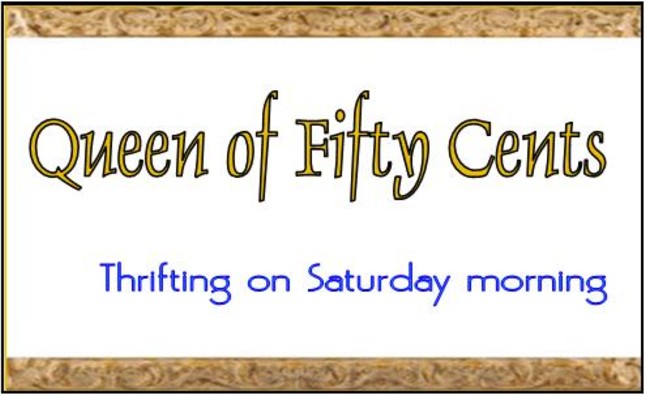Judy and I both got excited when we looked at a vintage coat
at a sale last Friday. “Look,” she said, “I wonder if someone replaced this
lining.”
The coat was a rosy brown wool crepe, very heavy, with
raglan sleeves and a pleat in back to give it swing.
The lining did indeed have an indefinable homemade quality to it, though very nicely done, with piping all around. Possibly it was the fabric, a print instead of the usual color-toned heavy satin. I figured this coat must have been such a favorite that the original lining needed replacing.
The lining did indeed have an indefinable homemade quality to it, though very nicely done, with piping all around. Possibly it was the fabric, a print instead of the usual color-toned heavy satin. I figured this coat must have been such a favorite that the original lining needed replacing.
Since my word for this year is “Mend” I just had to look at
the price tag. Four dollars! So I just had to try it on – and it fit. I have
more than one winter coat, but there’s room in my hall closet for another.
Home
with me it came.
When I got home I noticed that the lining was unattached to
the coat itself at the hem of the pleat in back. The inside of a garment tells
its story, so I peeled back the lining to look at the seams. And quickly
realized they were homemade. A commercially made coat as nice as this would
most likely have seams with the edges finished in some way. I don’t know, it's hard
to describe, but you know it when you see it, and when you don’t.
I kept pulling more of the coat to the wrong side,
confirming my guess. I worked my way up to the shoulder pads, which look like
something I could have constructed myself. Some woman made this coat; it did
not come from a factory. It would have been a huge project and taken enormous
skill. She made bound buttonholes (something I've never mastered, or even
wanted to - you have to SLASH the fabric before you insert the binding!).
The buttons are secured on the back with small anchor buttons. The back
pleat hangs perfectly.
Thread belt loops, diagonal pocket flaps.
The top-stitching…I looked more closely. The top-stitching
was all done by HAND. Through heavy wool.
Just an old coat, hanging in the hall closet at an otherwise
uninteresting estate sale. Unregarded by the dozens of people foraging through
the house. Mute testimony to the endeavors of an anonymous, creative woman. She
went to a fabric store, and found a pattern she loved, then shopped for just
the right fabric. It was more expensive than she’d counted on, so she chose a
less expensive lining fabric. Then days or weeks completing all the steps of
makery – cutting, pinning, basting, trying on. Adjusting, getting everything
just right before sitting down at her old Singer and stitching the seams. Assembling
the many pieces: the two sides of the back, inserting the pleat, then the
two fronts, with facings and those buttonholes. Each sleeve to be eased into
the armhole, buttoned tabs with hand top-stitching to insert into the seams.
And
then repeat it all for the lining, and insert that, outlined with white piping.
I wonder where she wore it, the first time? I hope someone
noticed her new coat, and complimented her on it.
I know I probably won't wear this coat often, but I will
wear it with admiration. Four dollars for artistry; the least I can do is
notice and honor the artist. But I do have one regret.
There was another coat in that closet, also marked $4. And I
barely glanced at it.
I wonder if she made that one too?























